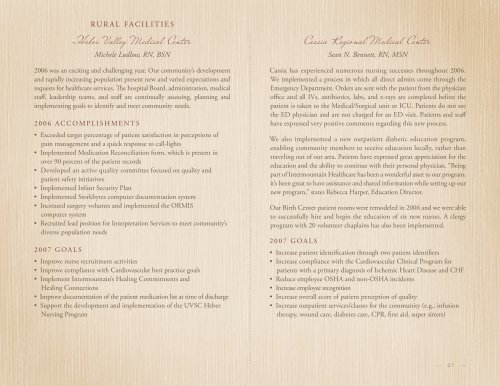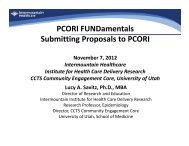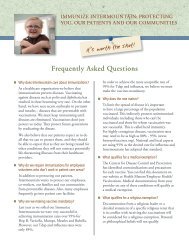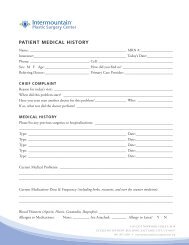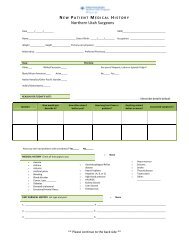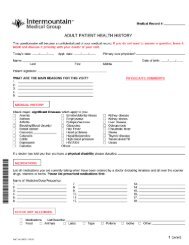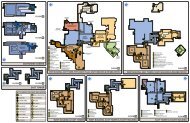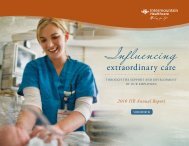Annual Nursing Update - Intermountain Healthcare
Annual Nursing Update - Intermountain Healthcare
Annual Nursing Update - Intermountain Healthcare
- No tags were found...
You also want an ePaper? Increase the reach of your titles
YUMPU automatically turns print PDFs into web optimized ePapers that Google loves.
u r a l f a c i l i t i e sHeber Valley Medical CenterMichele Ludlow, RN, BSN2006 was an exciting and challenging year. Our community’s developmentand rapidly increasing population present new and varied expectations andrequests for healthcare services. The hospital Board, administration, medicalstaff, leadership teams, and staff are continually assessing, planning andimplementing goals to identify and meet community needs.2 0 0 6 A c c o m p l i s h m e n t s• Exceeded target percentage of patient satisfaction in perceptions ofpain management and a quick response to call-lights• Implemented Medication Reconciliation form, which is present inover 90 percent of the patient records• Developed an active quality committee focused on quality andpatient safety initiatives• Implemented Infant Security Plan• Implemented Storkbytes computer documentation system• Increased surgery volumes and implemented the ORMIScomputer system• Recruited lead position for Interpretation Services to meet community’sdiverse population needs2 0 0 7 G o a l s• Improve nurse recruitment activities• Improve compliance with Cardiovascular best practice goals• Implement <strong>Intermountain</strong>’s Healing Commitments andHealing Connections• Improve documentation of the patient medication list at time of discharge• Support the development and implementation of the UVSC Heber<strong>Nursing</strong> ProgramCassia Regional Medical CenterSean N. Bennett, RN, MSNCassia has experienced numerous nursing successes throughout 2006.We implemented a process in which all direct admits come through theEmergency Department. Orders are sent with the patient from the physicianoffice and all IVs, antibiotics, labs, and x-rays are completed before thepatient is taken to the Medical/Surgical unit or ICU. Patients do not seethe ED physician and are not charged for an ED visit. Patients and staffhave expressed very positive comments regarding this new process.We also implemented a new outpatient diabetic education program,enabling community members to receive education locally, rather thantraveling out of our area. Patients have expressed great appreciation for theeducation and the ability to continue with their personal physician. “Beingpart of <strong>Intermountain</strong> <strong>Healthcare</strong> has been a wonderful asset to our program;it’s been great to have assistance and shared information while setting up ournew program,” states Rebecca Harper, Education Director.Our Birth Center patient rooms were remodeled in 2006 and we were ableto successfully hire and begin the education of six new nurses. A clergyprogram with 20 volunteer chaplains has also been implemented.2 0 0 7 G o a l s• Increase patient identification through two patient identifiers• Increase compliance with the Cardiovascular Clinical Program forpatients with a primary diagnosis of Ischemic Heart Disease and CHF• Reduce employee OSHA and non-OSHA incidents• Increase employee recognition• Increase overall score of patient perception of quality• Increase outpatient services/classes for the community (e.g., infusiontherapy, wound care, diabetes care, CPR, first aid, super sitters). . . 2 7 . . .


